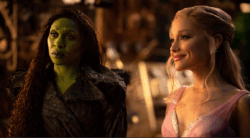Gena Rowland once said, “People in independent film have a passion; they’re not in it for the money.” Indeed, scrolling through the list of films nominated for Independent Spirit Film Awards and comparing it to the winners of more mainstream academies, there seems to be a bit of a disparity between what gets pop-culture attention and what’s thoroughly hipster. Perhaps more importantly, there is a huge gap between what gets funding and what does not.
Independent film has been around since at least 1908, according to Fandor. After 1908, the Motion Picture Patents Company formed the Edison Trust, essentially a media conglomerate for film production and distribution. A little over 10 years later, Charlie Chaplin and other silent film stars started the United Artists studio, the first independent film studio in the United States.
Flash forward 80 years, and indie movies continue to lure some of the industry’s most talented actors and directors. Stars including Greta Gerwig, Scarlett Johansson, and Matthew McConaughey and directors Steve McQueen, Sofia Coppola, Alexander Payne have all devoted the majority of their careers to independent film.
For these successful artists, it’s easy to secure funding. McQueen’s critically-acclaimed 12 Years A Slave was made with over $20 million. It’s the lesser known independent artists, however, who have the hardest time getting even $1 million for their projects.
In the initial planning stages of Blue Valentine, 13 years ago, Derek Cianfrance imagined shooting past and future scenes years apart. He signed Michelle Williams when she was only 21 and Gosling when he was 22 (two years after hiring Williams). Cianfrance was returning to film for his first feature-length film since 1998, when he directed the documentary, Black and White: A Portrait of Sean Combs.
Unfortunately, his inability to find funds for his project made it impossible to shoot. Even though he hired them years prior, shooting only began when Williams and Gosling were 29 and 28, respectively.
Conversely, you have directors like M. Night Shyamalan, who, after forming connections in the industry, has been able to finance 10 films over the last 20 years. Though Rotten Tomatoes suggests that his films hover at around a 50% rating, his lowest film, Avatar: The Last Airbender—released in 2010—was “rotten,” liked by only 6 percent of critics. It didn’t fare much better with audiences.
We know that films with lower budgets have the capacity to succeed—Napoleon Dynamite certainly surprised producers when its $400,000 budget went on to make $46,118,097 at the box office.
Napoleon Dynamite premiered at the Sundance Film Festival where it was picked up by Fox Searchlight and given limited distribution. Unexpectedly, audiences loved it and the film was subsequently released on an international scale.
The opposite also exists: those that keep the block intact. Take 2011’s Green Lantern for example. The film hired big names: Ryan Reynolds, Blake Lively, and Peter Sarsgaard, to name a few. After distribution, the production costs can almost double. For a film like Green Lantern, that means something like $400 million dollars went into production, plus marketing. The film didn’t even break $250 million in revenue.
Independent cinema must do more with less––entice audiences without major celebrities or CGI. Only festival recognition provides a means to mass distribution, and making it here can prove a bigger challenge than making the film at all.
With the recent successes of (500) Days of Summer, 12 Years a Slave, and Boyhood, there remains hope for independent film. Though the budgets of these films vary from $4 to $20 million, they all offer a depth unfound in traditional Hollywood films. Fortunately for indies, you can, sometimes, get more than you pay for.




